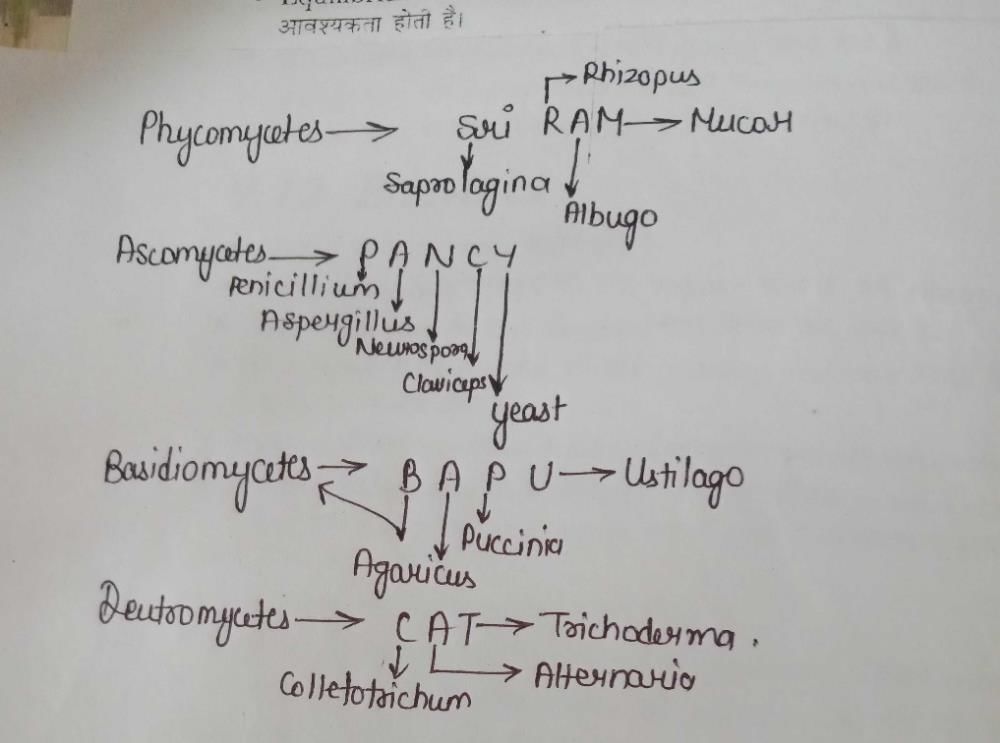NEET Exam > NEET Questions > please explain sayy the trick to fungi Relate...
Start Learning for Free
please explain sayy the trick to fungi
? Related: Biological classification
Most Upvoted Answer
please explain sayy the trick to fungi Related: Biological classifica...

Community Answer
please explain sayy the trick to fungi Related: Biological classifica...
Trick to Understanding Fungi
Fungi are a diverse group of organisms that play important roles in various ecosystems. They can be found in almost every habitat on earth, from the depths of the ocean to the tops of mountains. Understanding fungi can be challenging due to their unique characteristics, but there are some tricks you can use to make it easier.
Biological Classification
One of the best ways to understand fungi is to start with their biological classification. Fungi are classified into five phyla based on their characteristics:
- Chytridiomycota: This phylum includes the most primitive fungi, which have flagellated spores.
- Zygomycota: Fungi in this phylum reproduce through the formation of a zygospore, which is a resistant structure that can survive harsh conditions.
- Ascomycota: This phylum is the largest group of fungi and includes many familiar species such as yeast, truffles, and morels. They produce spores in a sac-like structure called an ascus.
- Basidiomycota: This phylum includes some of the most recognizable and economically important fungi, such as mushrooms and rusts. They produce spores on a specialized structure called a basidium.
- Deuteromycota: This phylum includes fungi that do not have a known sexual stage and are classified based on their asexual characteristics.
Fungal Anatomy
Another important aspect of understanding fungi is their anatomy. Fungi have a unique body structure that consists of thread-like structures called hyphae, which form a network called a mycelium. The mycelium is usually hidden from view and can grow to incredible sizes.
Fungal Ecology
Finally, understanding the ecology of fungi can help you appreciate their importance in various ecosystems. Fungi play important roles in nutrient cycling, decomposition, and symbiotic relationships with other organisms. Some fungi are also used for food, medicine, and industrial applications.
Conclusion
In conclusion, understanding fungi can be challenging but rewarding. By learning about their biological classification, anatomy, and ecology, you can gain a deeper appreciation for these fascinating organisms.
Attention NEET Students!
To make sure you are not studying endlessly, EduRev has designed NEET study material, with Structured Courses, Videos, & Test Series. Plus get personalized analysis, doubt solving and improvement plans to achieve a great score in NEET.

|
Explore Courses for NEET exam
|

|
Similar NEET Doubts
please explain sayy the trick to fungi Related: Biological classification?
Question Description
please explain sayy the trick to fungi Related: Biological classification? for NEET 2024 is part of NEET preparation. The Question and answers have been prepared according to the NEET exam syllabus. Information about please explain sayy the trick to fungi Related: Biological classification? covers all topics & solutions for NEET 2024 Exam. Find important definitions, questions, meanings, examples, exercises and tests below for please explain sayy the trick to fungi Related: Biological classification?.
please explain sayy the trick to fungi Related: Biological classification? for NEET 2024 is part of NEET preparation. The Question and answers have been prepared according to the NEET exam syllabus. Information about please explain sayy the trick to fungi Related: Biological classification? covers all topics & solutions for NEET 2024 Exam. Find important definitions, questions, meanings, examples, exercises and tests below for please explain sayy the trick to fungi Related: Biological classification?.
Solutions for please explain sayy the trick to fungi Related: Biological classification? in English & in Hindi are available as part of our courses for NEET.
Download more important topics, notes, lectures and mock test series for NEET Exam by signing up for free.
Here you can find the meaning of please explain sayy the trick to fungi Related: Biological classification? defined & explained in the simplest way possible. Besides giving the explanation of
please explain sayy the trick to fungi Related: Biological classification?, a detailed solution for please explain sayy the trick to fungi Related: Biological classification? has been provided alongside types of please explain sayy the trick to fungi Related: Biological classification? theory, EduRev gives you an
ample number of questions to practice please explain sayy the trick to fungi Related: Biological classification? tests, examples and also practice NEET tests.

|
Explore Courses for NEET exam
|

|
Suggested Free Tests
Signup for Free!
Signup to see your scores go up within 7 days! Learn & Practice with 1000+ FREE Notes, Videos & Tests.

























